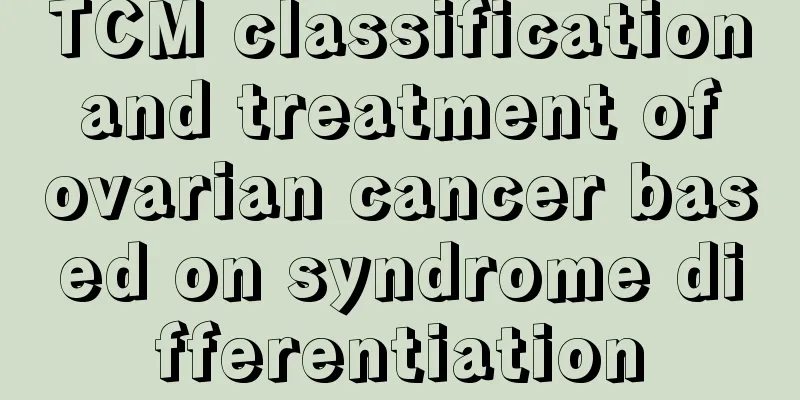Peutz-Jeghers disease

|
I don’t know if you have heard of the disease called Peutz-Jeghers disease. It mainly occurs inside the human body, but melanin deposition on the face causes dark spots. These black spots have a huge impact on the beauty of people's faces. However, in ancient times, the cause of Peutz-Jeghers disease was always mistakenly believed to be a human intestinal disease. It was not until modern times that it was discovered that Peutz-Jeghers disease is actually caused by other reasons. Next, let me introduce to you the causes of black spot polyposis. Peutz-Jeghers syndrome, also known as pigmented polyposis syndrome, is an autosomal dominant genetic disease, and about 50% of patients have a clear family history. The main manifestations are pigmentation on the face, around the lips and cheek mucosa, as well as multiple polyps in the gastrointestinal tract, which are pathologically called hamartomas. The disease was first discovered in 1895. In 1921, Dutch scholar Peutz reported 7 cases of multiple intestinal polyps with cat membranes on the lips and cheeks and black spots on the fingers and toes in three generations of a family. In 1949, Jeghers further introduced this syndrome in detail and determined that the disease was inherited in a dominant gene. The name "Peutz-Jeghers syndrome" was first used in 1954. In 1995, William TI first reported a case of malignant transformation of polyps in a patient with this syndrome. Boyz-Jegger syndrome is not very common in our country. treat edit Endoscopic treatment, surgical treatment, and combined internal and external surgery can all be used to treat this disease. Boyz-Jager syndrome should be detected early and treated with early surgery to prevent malignant transformation. Currently, the use of colonoscopy can more easily evaluate small intestinal tumors and improve prognosis and treatment. Colonoscopy also plays an important role in monitoring inherited polyps by helping to detect precancerous changes, reducing polyp complications, and improving surgical options. Laparoscopy can be used to diagnose the site of intestinal obstruction and intussusception, and to remove the intussuscepted intestine. It can also be used to remove part of the colon and treat polyps. When combining endoscopy and surgery to treat Boyz-Jegger syndrome polyps, an enteroscope can be placed through the mouth during the operation, and the endoscope can be withdrawn while examination is performed. If polyps are found, they can be removed endoscopically or surgically. For multiple polyps in the intestine that are larger than 0.5 cm, they can be electrocauterized using a fiberscope in several sessions. Endoscopic microwave treatment of gastrointestinal polyps in Boyz-Jager syndrome has been widely used in clinical practice, and 50 to 60 polyps can be treated at one time. Endoscopic microwaves can directly contact the surface of polyps to cause them to coagulate and necrotize, and are particularly suitable for treating multiple, dense, broad-based or thin-pedunculated small polyps. Microwaves also have anti-tumor immune effects. The combination of endoscopy and surgery in the treatment of Boyz-Jegger syndrome has the following advantages: ① It can accurately assess the extent of intestinal polyps; ② It can remove small polyps under endoscopy; ③ The endoscope can guide the surgeon to select the location of intestinal resection; ④ It can avoid multiple laparotomies, excessive intestinal resection, and the occurrence of short bowel syndrome. The patient in this case was a beneficiary of the collaborative treatment between internal and external medicine surgeons. Preoperative endoscopic diagnosis was performed and small polyps in the stomach and colon were removed. During the operation, the stomach, colon or small intestine was cut open and the endoscope was directly inserted to remove small polyps, while large polyps were surgically removed, thus preserving the intestinal tract to the maximum extent possible. Because the surgery was performed too late, the duodenal polyp had become malignant and invaded the superior mesenteric vessels. 3. Indications for surgery: ① Intussusception, intestinal obstruction; ② Recurrent abdominal pain, anemia; ③ Gastric, rectal, colon polyps and adenomas larger than 1 cm; ④ Malignant transformation of polyps; ⑤ Small intestinal polyps > 2 cm. In addition to endoscopic removal of polyps, polyps can also be removed through laparotomy. For larger polyps or those that grow densely together, part of the intestine may be removed. If there is malignant transformation, it can be treated as a malignant tumor. For Poitz-Jegger syndrome complicated by intussusception and intestinal obstruction, if there is no intestinal necrosis, non-surgical treatment can be used. Most patients with Peutz-Jeghers syndrome seek medical treatment due to complications caused by polyps, such as intussusception, intestinal obstruction, and bleeding. Most of them are single lesions, but may recur in the future. Cases with multiple lesions involving the stomach, duodenum, small intestine, and colon are relatively rare. The principles of surgical treatment are to remove lesions, relieve complications and prevent malignant transformation. For patients with intussusception, intussusception reduction is performed. If intestinal necrosis has occurred, intestinal segment resection is performed. For larger polyps, a longitudinal incision is made in the intestinal wall next to the polyp pedicle, the polyp and the surrounding part of the intestinal wall are removed, and then the incision is sutured transversely. Intestinal resection and anastomosis can be performed for intestinal segments with dense polyps. A pathological frozen section examination should be performed during the operation. If cancerous polyps are found, radical resection should be performed. During the operation, care should be taken to preserve the intestine as much as possible to prevent short bowel syndrome after surgery. Lesions that can be reached by colonoscopy and gastroscopy can be removed under endoscopy. Patients with Peutz-Jeghers syndrome, as well as their family members, should be actively followed up to detect new patients in the family, so as to achieve early diagnosis, early treatment, and early detection and treatment of malignant tumors in the gastrointestinal tract or other parts of the body. A complete follow-up plan is required, which, in addition to general routine examinations, should also include gastroscopy and colonoscopy. Female patients should include breast examination, cervical smear and abdominal B-ultrasound examination, etc. |
<<: The banana changed color after being mashed into paste
>>: How to judge whether it is a tooth cavity or a polyp
Recommend
How to ripen green papaya more effectively
Papaya has a good effect on beauty and breast enh...
Will swimming cause rheumatism
Swimming is a very good fitness exercise. This fo...
Is it good to run in the morning on an empty stomach?
Many friends who want to lose weight believe that...
Signs of cervical cancer recurrence
If the patient develops cervical cancer again 6 m...
You can't eat hot tofu in a hurry
There is a saying that goes, "You can't ...
Can stomach cancer cause lymphoma?
Will stomach cancer cause lymphoma? According to ...
How to wash blood stains from clothes
The most annoying thing when we wash clothes is s...
What should I do if I get red spots on my face due to allergies
Many people are prone to red spots on the face du...
Introduction to sequelae of cardiovascular stents
In daily life, people’s eating habits are getting...
How long can you live with advanced hepatobiliary cancer? Generally 6-12 months
How long one can live with advanced liver and gal...
Where is the best place to treat ovarian tumors
In today's society, science and technology ar...
Is local ablation effective in treating liver cancer? What are the advantages of TCM in treating liver cancer?
Is local ablation effective for liver cancer? Loc...
What food can cure lumbar disc herniation quickly
Lumbar disc herniation is the common name for lum...
The main symptom of rectal cancer is manifested in bowel movements
The main symptom of rectal cancer is in the stool...
What to eat after renal hamartoma surgery
After kidney tumor surgery, you generally need to...









